Egrets in the Monterey pines, 2019
December 21, 2018
By December, the dying Monterey pine that for generations hosted the egret colony on Alameda’s Bay Farm Island had been cut down. A Snowy Egret that didn’t migrate wades the shoreline where the Monterey pine had once swayed over the lagoon.
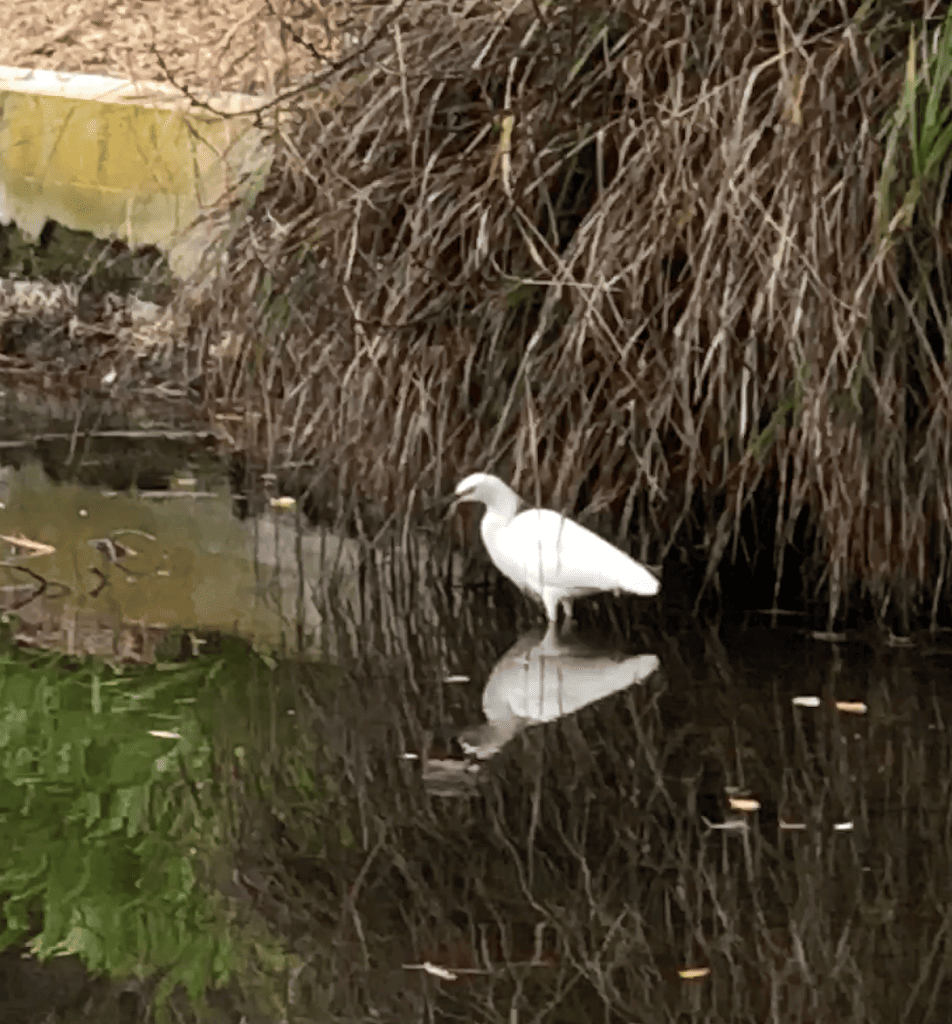
January 2019
There is the changing beauty of the ecosystem. Color-rich reflections surround Mallards and coots. Close-by are two crows, sparrows, an arriving gull, a Black-crowned Night-Heron. Strangely quiet birds.
February
An egret is spotted flying in the trees in Leydecker Park by the library.
March 27
Breathtaking sight as we approach where the colony once was and spot six Great Egrets in several pines a few yards from the old Monterey pine tree. Hardly drawing attention to themselves, they have built their new nests.
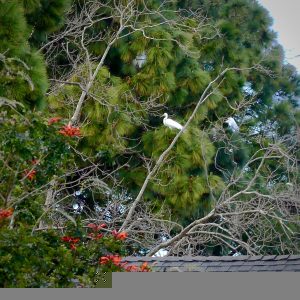
April 1
They point their beaks to the sky as they wait for their mate.

April 15
They peek out from the pine needles and begin their ceremonial behavior. They fan out feathers into a lacy cape. The lores, the area between eyes and beak, change from yellow to a brilliant green, nearly neon.
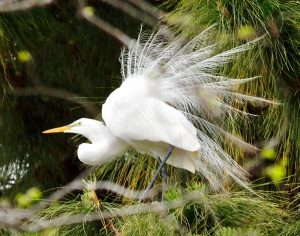
Occasionally a nest-watching male flies, circling his chosen spot. One is seen at the preschool next door, snipping a branch from a tree in the schoolyard and returning to expand the nest.
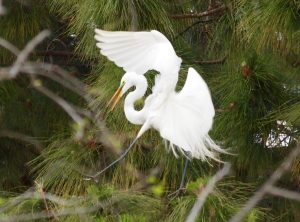
May
The Snowy Egrets arrive!! joining the dozen or more Great Egrets. By May 18 there are chicks from the snowys, joining 18-20 chicks from the Great Egrets.
June through July
The egret colony is alive, clattering, clicking, croaking, and jumping. It’s a village.
The bright white egrets are dotted over the cluster of green pine trees. Some egrets are nest-tending. Some are taking a break from the chicks, watching from a distance.

Only as the chicks grow large and test their wings in play is there a better opportunity to observe them. The fledglings poke upward through the pine branches with long white swaying necks and suddenly display huge outstretched wings.

July
By mid July many chicks are now larger than some of their parents. They don’t fly. They are still being fed by a parent inserting regurgitated fish and other prey deep into their throats.
Feeding is preceded or followed by beak battles. The youngsters gang up and together clamp down on a parent’s beak and head. They are learning balance, gaining strength, quick reflexes while devilishly exploring their brilliantly large wings.
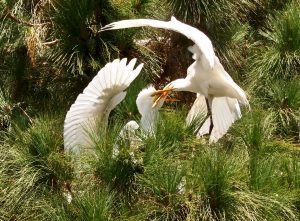
July 18
In mid-July, a Black-crowned Night-Heron always standing on only one leg stays close to the egret colony and eventually joins the egrets in the pines. Whenever the night-heron returns to the ground, there is a companion Great Egret standing close-by.
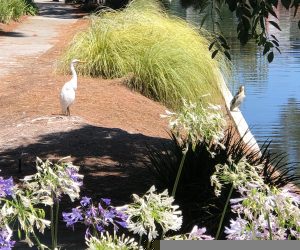
August
What is most astounding is that the egrets have taken several trees instead of a single favorite tree for the colony. The egrets are not as numerous as in recent years, but they have claimed a bigger site, better to shield them from the wind and survive disturbances. They have built all new nests and seem to be thriving, while remaining close to viewers.
Mid-August 2019
By August 17, the nesting egrets have flown away. Across from the now-empty pine grove that hosted the new colony, there is a tree leaning over the lagoon that resembles the old Monterey Pine in looks and location. One Great Egret and one Snowy Egret roost in its crown.

Photographer Gerry Traucht lives in Berkeley. See his Instagram for current updates on the Alameda Egret Tree. Visit www.gerrytraucht.com for his exhibit, the Egrets In Our Midst.
